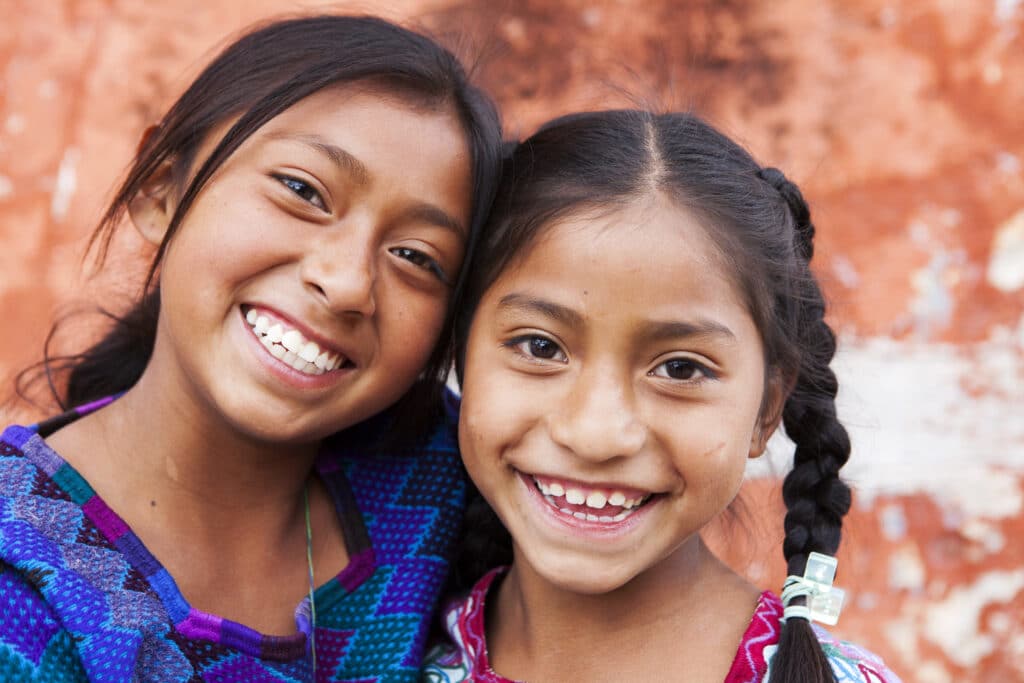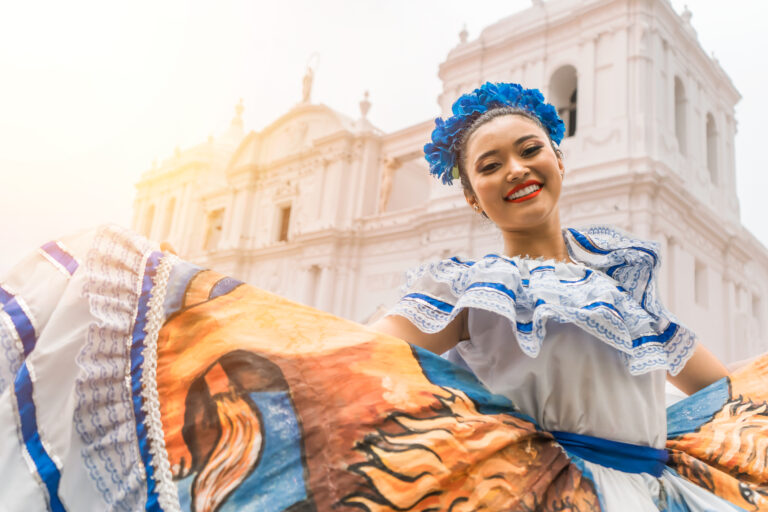Our team here at Remitly would like to wish a Happy Independence Day to El Salvador, Guatemala, Honduras, Costa Rica, and Nicaragua. In honor of this important holiday, we created this guide that explores the independence of several Latin American Countries.
What is the significance of September 15?
September 15th is a national day of celebration in Costa Rica, El Salvador, Guatemala, Honduras, and Nicaragua. The annual celebrations mark the end of Spanish rule when the Central American people won new freedoms without bloodshed.
The day honors the Declaration of Independence, signed by a group of countries that included what are now Costa Rica, Guatemala, Honduras, Nicaragua, and El Salvador. They were also referred to as the United Provinces of Central America or the Kingdom of Guatemala.
These countries, plus Panama and Belize, make up modern Central America, which is Latin America’s geographic bridge between Mexico and South America.
Every year for the entire month of September, Central American countries celebrate with unique traditions, from parades to performances, dancing in the streets, and speeches from public officials.
Let’s look at the history of Central America’s independence days and how the different countries celebrate.
A brief history of Central American independence days
Spaniards first established settlements in Central America in the early 1500s, which led to clashes between the indigenous population and Spanish conquistadors.
During America’s civil war, the American Revolutionary War, also known as the American War of Independence, there were clashes between the British and the Spanish on Nicaraguan territory.
Britain also went on an offensive in the Caribbean. However, it wasn’t until decades later that the Peninsula War, and the ousting of King Ferdinand VII from the Spanish throne, allowed revolts in El Salvador and Nicaragua against Spanish forces.
These revolts led to the Spanish Constitution of 1812, the first step toward Central America’s independence. This proclamation affirmed national sovereignty but was short-lived, as it was repealed in 1814 when Ferdinand VII regained the throne and abolished the constitution.
In 1821, the provincial council of Guatemala joined forces with other Central American leaders from Nicaragua, Costa Rica, El Salvador, and Honduras to draft, debate, and sign the proclamation that would come to be known as the Act of Independence for Central America.
How does each country celebrate its Independence Day?
On September 9th, a torch symbolizing freedom is carried from Guatemala to Costa Rica’s colonial capital, Cartago, just east of San José.
It is passed hand to hand and relayed on foot through all five countries celebrating independence on September 15th. In addition, lanterns are often carried through the streets as a traditional symbol of hope.
But the celebrations often begin much sooner than that and happen simultaneously as the torch passes through each country. Food, dancing, parades, and music are all part of the celebratory festivities, and each country celebrates its national pride uniquely!
On September 11th, the torch changes hands at “Las Manos,” the border of Honduras and Nicaragua. Ministers exchange the torch from one to another. The following day is filled with regional festivals.
Finally, the torch is passed at the southern border, “Peñas Blancas,” between the Nicaraguan and Costa Rican Ministers of Education.

Nicaragua Independence Day
Nicaraguans crowd the capital city of Managua to celebrate Independence Day with a big competition. It’s a battle of the bands called Festival Nacional de Bandas Rítmicas. Students perform and compete for a panel of judges. The groups meld together traditional music with rhythmic dancing.
Nicaraguans have a long history of standing against those who want to claim their land and its people. For example, in 1520, a conquistador arrived in Panama, and the Spaniards tried to conquer Nicaragua. The attempt failed.
In Nicaragua, the Central American Patrimonial festivities begin on the first day of September, as they celebrate with parades and marching bands from local schools participate. On September 15th, the Act of Independence of Central America is read in all state schools. In the past, one of their celebratory activities on the day of independence included a musical festival.
By 1808 Spain was vulnerable after fighting in Europe’s Peninsular War, and a French nobleman became King Joseph of Spain.
King Ferdinand then ascended to the Spanish throne, and on September 15, 1821, the Province of Guatemala declared the Act of Independence of Central America.
Costa Rica Independence Day
Word of the country’s newly won freedom didn’t reach Costa Ricans until a month after its declaration of independence was proclaimed in Guatemala City. September is called “Homeland Month” in Costa Rica.
Costa Rica Independence Day celebrations kick off on September 14 at 6 pm across the country as people join in an enthusiastic singing of the National Anthem.
Then the Desfile de Faroles, the parade of homemade lanterns, begins. The lanterns symbolize the original freedom torch. A big fireworks show follows the parade.
And of course, traditional food is an important part of the party. Local favorites include arroz con pollo, fried yuca, tamales, black beans and rice, coconut flan, and tres leches cake.
El Salvador Independence Day
September 15 is a National Holiday in El Salvador. It’s a celebration marking the Republic of El Salvador’s freedom from Spain in 1821 and a brotherly unification with its neighbors in Central America.
El Salvador’s Independence Day celebrations start bright and early at 7 a.m., with schools participating in a massive parade with dancing and marching. They also have a military parade to commemorate the day.
El Salvador shows solidarity with regional neighbors by starting each Independence Day parade with a procession of cars decorated with the flags of the other four Central American countries.
Guatemala Independence Day
On September 15, city and village streets in Guatemala become a sea of blue and white each year to show national pride.
Guatemala begins preparing for Independence Day festivities well before the national holiday. Schoolchildren rehearse dances and musical performances. What follows on the 15th is a massive party with more dancing, music, parades, lots of food, and a fireworks display.
Like other Central American countries, Guatemalan Independence Day celebrations feature young people. Marching bands and school groups perform, and it’s a great honor to be chosen to participate. Parade-goers are treated to rousing heavy percussion mixed with traditional Guatemalan marimba pieces.
Honduras Independence Day
A Honduran lawyer drafted the Act of Independence of Central America.
Independence Day celebrations kick off on the first of September in Honduras. Every town has parades—some Honduran municipalities even close main highways for the festivities.
Honduras begins celebrating independence day with Flag Day on September 6th and more celebrations on September 15th.
How are Central American Independence Days different from Mexican Independence Day?
Independence Day falls just a day later in Mexico, on September 16.
You’ll find many similarities between Mexico’s and Central America’s Independence Day celebrations. From Chiapas in the south of Mexico to its Caribbean coast, people mark the historical beginning of the Mexican revolt against Spain on September 16th. However, the political history is quite different in Mexico.
Celebrating Hispanic Heritage Month
According to the Pew Research Center, more than 62 million Latinos are living in the U.S. who are of Hispanic origin. These people include American citizens, permanent residents, and temporary workers.
Latinos immigrate to the U.S. for many reasons. They may be hoping to benefit from America’s employee opportunities or want more education for their families. Whatever motivates them to leave their country and come to America, they contribute to American culture and the economy.
What the American Latino people contribute to the culture and history of the nation is recognized and celebrated every year during National Hispanic Heritage Month. This annual observance lasts from September 15 to October 15. The Act of Independence of Central America is also recognized and celebrated during Hispanic Heritage Month.
The observation started in 1968 under the administration of President Lyndon Johnson, but back then, it was celebrated as National Hispanic Heritage Week. In 1988, President Ronald Reagan expanded the celebration to last for an entire month, and National Hispanic Heritage Month found its place in public law.
Throughout National Hispanic Heritage Month, there are usually art shows and exhibits at the Library of Congress, the National Gallery of Art, and other museums run by the Smithsonian Institution, highlighting Hispanic and Latino artistic talents.
Across the country, you will also find community gatherings and festivals that are open to the public. The National Park Service even holds special National Hispanic Heritage Month events. Celebrations grow each year as America’s Hispanic population grows.
Independence days in other Latin American countries

Although they don’t observe the holiday on September 15, many other countries in Central America and South America have their own independence days. Let’s briefly take a look at a few.
Argentina
Argentine Independence Day falls on July 9. On this date in 1816, the Congress of Tucumán granted independence to the countries within the United Provinces of South America and freedom to the Latinos there.
To mark the occasion, people fly the flag of the Argentine Republic and turn out to watch parades and military demonstrations. It’s also a popular date for family reunions, with large groups gathering and feasting on traditional cuisine like barbecued meats called asado.
Belize
In Belize, Independence Day takes place on September 21. This date is when the Hispanic nation in Central America gained independence from British rule, occurring during National Hispanic Heritage Month.
During the day, large groups turn out to watch parades, the biggest of which occurs on Albert Street in Belize City. People dance to soca music and watch fireworks in the evenings. It’s also a popular time for families to hold barbecues.
Chile
The people of Chile celebrate Independence Day on September 18, just a few days after many Hispanic people in Central America observe their version of the holiday. Its timing also places its observance within National Hispanic Heritage Month.
The date of September 18 corresponds to the signing of the Chilean Declaration of Independence in 1810. However, the country did not gain complete freedom from Spain until February 12, 1818.
Independence Day celebrations in Chile are known as Fiestas Patrias. They occur in many towns across the country, often including parades, demonstrations by traditional cowboys called huasos, live music, and dancing.
Panama
Independence Day in Panama is observed on November 28. On this day in 1821, the nation declared its independence from Spain, and its population fell under the protection of the Colombian government.
Like in Chile, Independence Days celebrations are known as Fiestas Patrias, which feature parades, fireworks, traditional dance performances, and live music. Many Panamanian families plan vacations around the public holiday.
